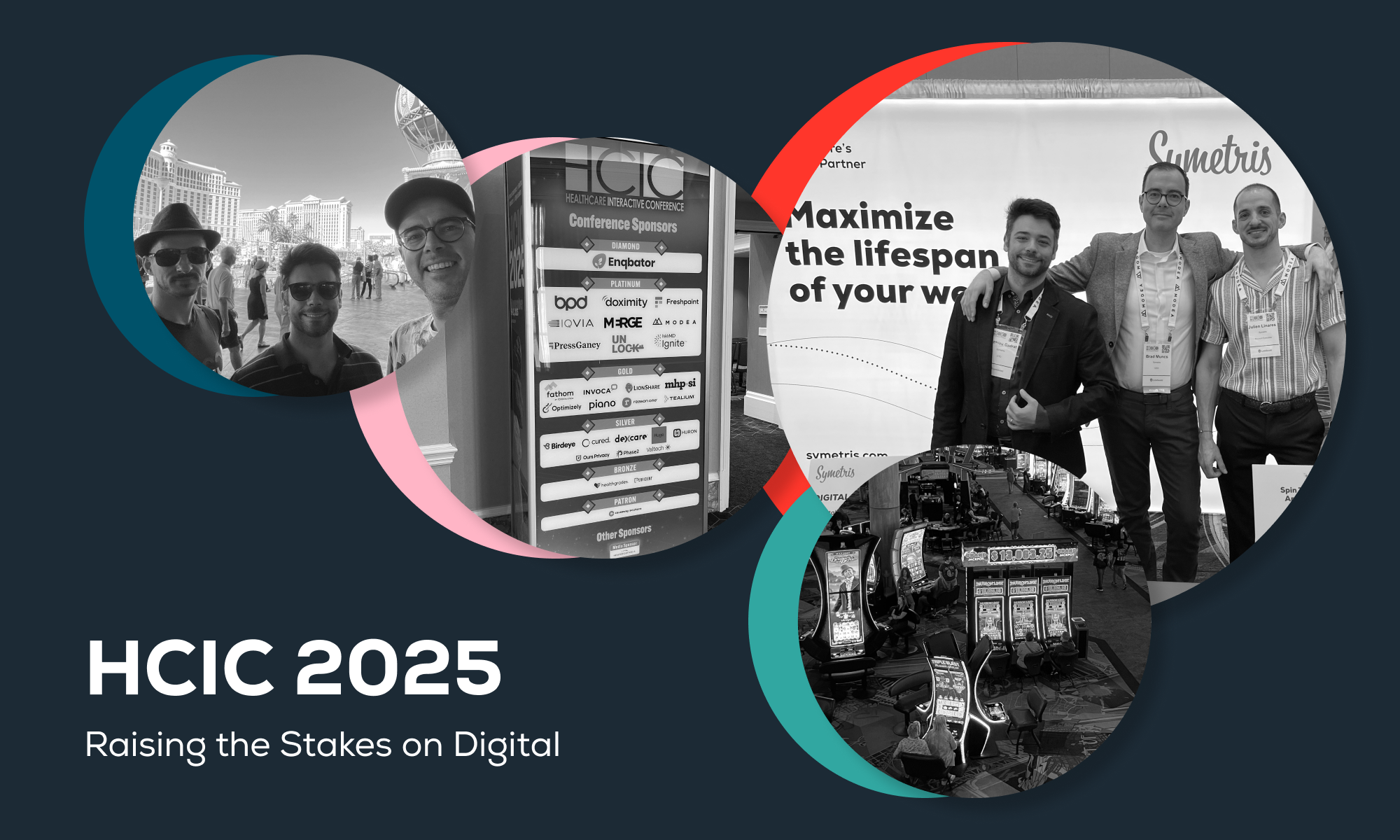Raising the Stakes on Digital: 3 Healthcare Marketing Shifts from HCIC 2025
HCIC 2025 revealed a major shift: healthcare marketers are refocusing on website operations, governance, alignment, and measurable results. Here are five actionable changes to implement now.

HCIC 2025 in Las Vegas felt to me like a refreshing course correction. The energy was high, the conversations sharp, but the tone finally moved away from hype cycles and panic modes. Last year was dominated by grand AI promises and the collective anxiety over HIPAA compliance, cookies, and analytics. This year, the industry felt like it had its feet back on the ground.
That shift matters.
Instead of chasing shiny objects or reacting to compliance fears, teams were focused on fundamentals: improving how their websites work, tightening processes, and removing the friction that slows teams down. Economic pressure played a role in that — smaller teams, tighter budgets, bigger expectations — but it also forced a clarity that’s been missing.
And AI? It showed up in a more useful way. Not as a magic wand, but as a practical tool that made marketing teams more efficient.
Here are the three operational shifts from HCIC that healthcare marketing leaders can act on this year.
The Website’s Role Is Changing From Discovery to Decision
Data showed that patients are now arriving on health system websites with clearer intent than in previous years. They’re asking their early questions elsewhere: through Google’s AI summaries, ChatGPT, WebMD, and other tools that give quick, confident answers. According to research by Press Ganey shared during the conference, nearly one in five consumers now uses an AI tool before reaching a hospital website. By the time they land on yours, they already understand their situation. They’re not browsing symptoms. They’re trying to act.
This shift makes one thing obvious: large symptom encyclopedias and long-form condition pages are losing relevance as entry points. The website’s job has become more straightforward and more urgent. It needs to help someone get care, fast. Find a doctor. Check availability. Pick a location. Know what will happen next.
Chatbots fit naturally into this behavior. Boston Children’s proved that when conversational tools are designed well, they can help visitors get care information without needing to reach out to call center agents. They work because they match how people now expect to “ask their way” through digital tasks.
Action for marketing leaders:
- Replace vague CTAs (“Learn more”) with specific pathways to care (“Find a doctor,” “Book an appointment,” “Find a location”).
- Update schema and metadata so search engines and AI can scan your key pages.
Stop Treating Your Website Like a Project
Treating your health system’s website like a project is holding you back. A project has a beginning and an end. You redesign, you launch, you check the box… and the site starts aging the very next day. That approach no longer fits the reality of how patients behave or how fast digital expectations shift.
Seeing the website as a product (or as an ongoing program) changes the entire dynamic. A product has an owner. It evolves. It earns its keep through continuous improvements that respond to real user needs. This mindset keeps the website aligned with your hospital’s goals instead of letting it stagnate until the next major overhaul.
It also keeps teams aligned. When marketing, IT, and operations work from a shared roadmap, decisions become clearer, priorities stay visible, and small improvements stack into meaningful impact. The website stays useful for years, not months.
UCI Health illustrated this well. They launched during a period of shifting scope, acquisitions, and a major Epic transition. They moved forward because they weren’t waiting for perfect conditions. They were operating from a product mindset: make progress, release improvements, and keep moving.
Action for marketing leaders:
- Build a 12-month website roadmap with planned quarterly improvements. Then revisit it every 90 days.
Aligning Teams and Data Keeps Digital Moving
In many health systems, the biggest barriers to digital progress aren’t technical. They’re operational. Two types of silos slow down even the simplest improvements: people silos and data silos. Both matter, but most organizations can address the people side far sooner and feel the impact immediately.
People silos
When marketing, IT, clinical teams, operations, and the contact center work separately, decisions slow down. Priorities clash, and even simple updates can get stuck. Adding clinical or operations leaders to your governance group brings everyone into the same conversation and removes many of those delays. It reduces rework, resolves blockers earlier, and ensures digital decisions reflect the realities of care delivery and access. This is the quickest, most achievable win for almost every system.
Data silos
Data alignment takes more time, but it’s becoming essential. When consumer behavior, scheduling data, and clinical outcomes sit in different systems, it’s hard for marketing teams to demonstrate the real ROI of their work. In leaner times, that gap makes budget conversations harder. Well-connected data can reveal where digital investments are actually generating appointments and revenue.
A lot of this depends on accessing data that traditionally sat outside the marketing team. Epic’s visible presence at HCIC signaled that clinical platforms are inching closer to marketing workflows. The direction is clear: systems are starting to link what happens online with what happens in the clinic.
A good place to start is to take one service line and map the journey end-to-end. Identify where marketing has influence, where drop-offs happen, and what data you can reliably access today. Even a small, well-defined analysis can change internal conversations because it replaces assumptions with evidence.
Action for marketing leaders:
- Add clinical or operations leaders to your website governance group and align everyone around shared KPIs (ex: conversion to appointment or patient satisfaction signals).
- Build a simple ROI model for one service line: trace a campaign from source to scheduled appointment, estimate the revenue impact, and use that insight to guide next quarter’s investment.
These Insights Shouldn’t “Stay in Vegas”!
HCIC 2025 made something very clear: the teams making real progress aren’t waiting for perfect conditions or perfect data. They’re tightening workflows, aligning stakeholders, and treating the website as a long-term product instead of a periodic overhaul.
If you apply even one of the actions from this article in the next quarter, you’ll make sure these actionable insights don’t “stay in Vegas.”
